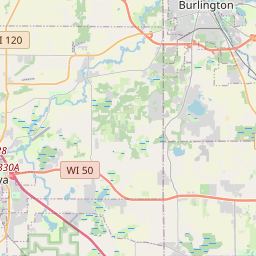Lovell G.A.R. Post 230 Civil War Memorial
Historical marker location:






April 12, 1861: The Civil War begins with the Confederate attack on Fort Sumter, located in South Carolina's Charleston Harbor.
April 15, 1861: President Abraham Lincoln issues a call for 75,000 volunteers to serve in the Union Army to suppress the rebellion.
May 24, 1861: The first major land battle, known as the First Battle of Bull Run (or First Battle of Manassas), takes place in Virginia. It ends in Confederate victory.
September 17, 1862: The Battle of Antietam in Maryland becomes the bloodiest single-day battle in American history, with heavy casualties on both sides. The Union forces, commanded by General George McClellan, manage to halt Confederate General Robert E. Lee's advance into Union territory.
January 1, 1863: President Lincoln issues the Emancipation Proclamation, declaring that all slaves in Confederate-held territories are to be set free. However, the proclamation does not immediately free all slaves in the United States.
July 1-3, 1863: The Battle of Gettysburg in Pennsylvania takes place, resulting in a significant Union victory and inflicting heavy casualties on Confederate forces. It marks a turning point in the war.
November 19, 1863: President Lincoln delivers the Gettysburg Address, emphasizing the principles of liberty, equality, and the preservation of the Union.
April 9, 1865: General Robert E. Lee surrenders to Union General Ulysses S. Grant at Appomattox Court House in Virginia, effectively ending the Civil War.
April 14, 1865: President Lincoln is assassinated by John Wilkes Booth while attending a play at Ford's Theatre in Washington, D.C.
May 10, 1865: Confederate President Jefferson Davis is captured, signaling the collapse of the Confederate government.
December 6, 1865: The Thirteenth Amendment to the United States Constitution is ratified, officially abolishing slavery throughout the country.
While this timeline provides an overview of key events, it is important to note that the Civil War spanned over four years, from 1861 to 1865, and encompassed numerous battles, campaigns, and political developments that shaped the course of American history.
The first hydroelectric power plant in the United States was built in Appleton, Wisconsin in 1882.
In 1834, Kenosha County was officially created by the Wisconsin territorial legislature. The town of Southport, located within the county, soon became a major port for shipping goods and a hub for trade in the region. As the years went by, Southport was renamed Kenosha, which is derived from a Native American word meaning "place of the pike."
During the mid-19th century, Kenosha County experienced significant growth and development. The establishment of the railroad in the 1850s played a vital role in the county's industrialization. The city of Kenosha became a major manufacturing center, producing goods such as wagons, machinery, and automobiles. The automobile industry, in particular, thrived, with companies like Nash Motors and American Motors Corporation calling Kenosha County home.
Throughout the 20th century, Kenosha County faced both challenges and successes. It weathered economic downturns like the Great Depression but also experienced prosperity during periods of growth and innovation. In recent years, the county has continued to diversify its economy and attract new industries.
Today, Kenosha County is known for its vibrant communities, picturesque lakefront, and strong manufacturing sector. It remains an important center for transportation, commerce, and industry in southeastern Wisconsin, while also offering residents and visitors a high quality of life and access to beautiful outdoor recreational opportunities.
Kenosha County Timeline
This timeline provides a glimpse into the major events and milestones that have shaped the history of Kenosha County, Wisconsin.
- 1832 - The Treaty of Chicago is signed, opening up the area for settlement
- 1833 - The first European settlers arrive in what would become Kenosha County
- 1836 - Kenosha County is officially established
- 1843 - The city of Kenosha is incorporated
- 1850 - The first railroad line, the Chicago & Milwaukee Railroad, reaches Kenosha
- 1861 - The American Civil War begins, and Kenosha County contributes soldiers to the Union Army
- 1871 - A massive fire destroys much of downtown Kenosha
- 1890 - Kenosha's population reaches over 20,000, becoming a major industrial and manufacturing center
- 1922 - The city of Kenosha becomes home to the first American Motors Corporation plant
- 1960s - Kenosha experiences social unrest and economic challenges
- 2004 - The Kenosha Dream Playground is built, becoming a popular attraction for children
- 2010 - The Uptown district in Kenosha undergoes revitalization efforts